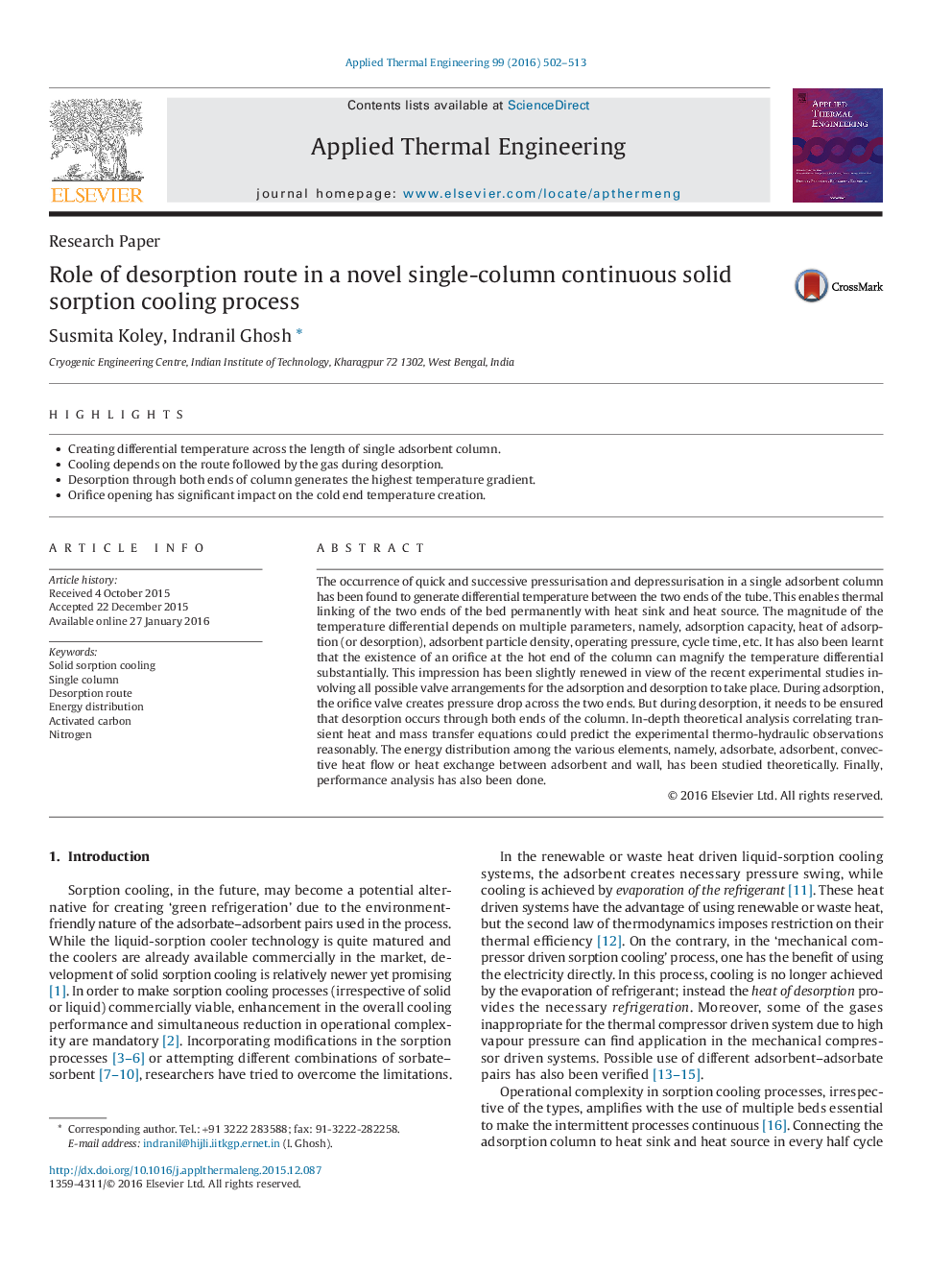| Article ID | Journal | Published Year | Pages | File Type |
|---|---|---|---|---|
| 644704 | Applied Thermal Engineering | 2016 | 12 Pages |
•Creating differential temperature across the length of single adsorbent column.•Cooling depends on the route followed by the gas during desorption.•Desorption through both ends of column generates the highest temperature gradient.•Orifice opening has significant impact on the cold end temperature creation.
The occurrence of quick and successive pressurisation and depressurisation in a single adsorbent column has been found to generate differential temperature between the two ends of the tube. This enables thermal linking of the two ends of the bed permanently with heat sink and heat source. The magnitude of the temperature differential depends on multiple parameters, namely, adsorption capacity, heat of adsorption (or desorption), adsorbent particle density, operating pressure, cycle time, etc. It has also been learnt that the existence of an orifice at the hot end of the column can magnify the temperature differential substantially. This impression has been slightly renewed in view of the recent experimental studies involving all possible valve arrangements for the adsorption and desorption to take place. During adsorption, the orifice valve creates pressure drop across the two ends. But during desorption, it needs to be ensured that desorption occurs through both ends of the column. In-depth theoretical analysis correlating transient heat and mass transfer equations could predict the experimental thermo-hydraulic observations reasonably. The energy distribution among the various elements, namely, adsorbate, adsorbent, convective heat flow or heat exchange between adsorbent and wall, has been studied theoretically. Finally, performance analysis has also been done.
